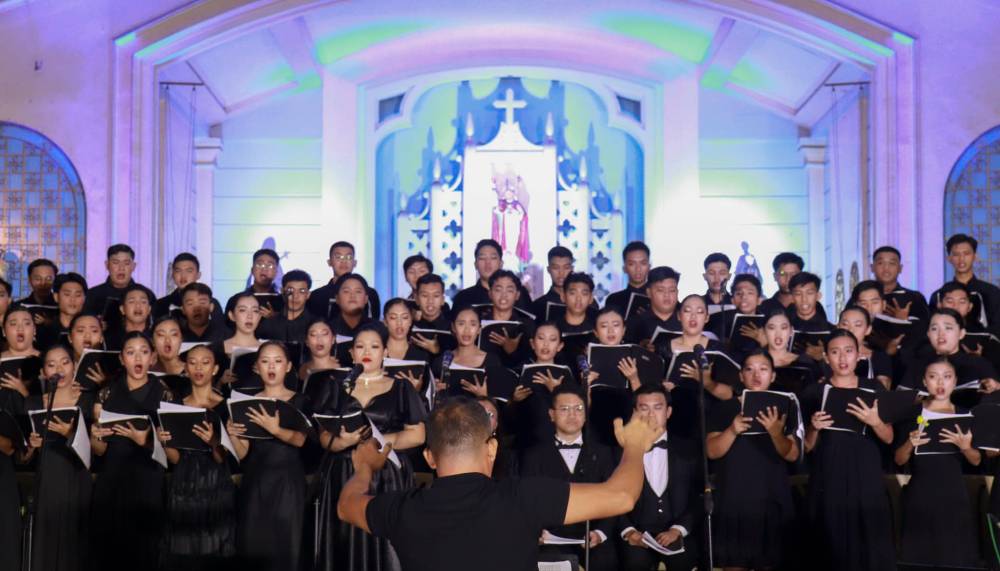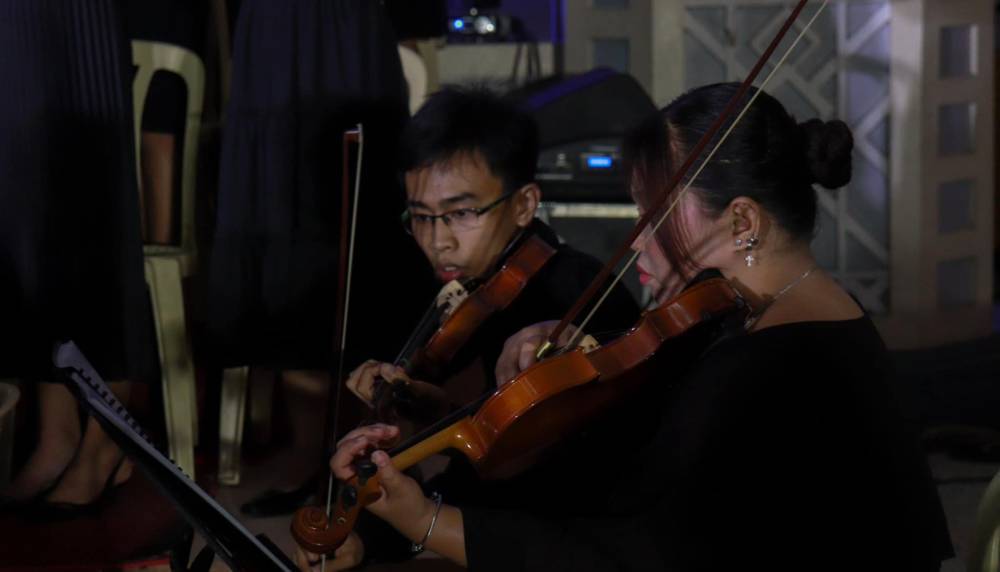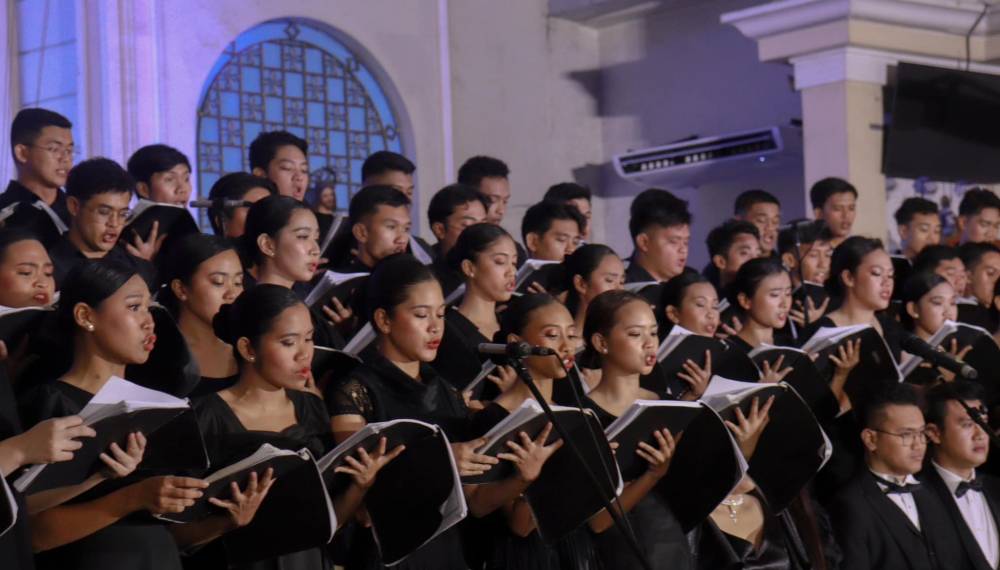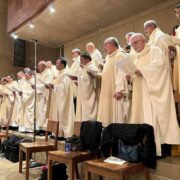A death Mass worthy of the living: Mozart’s ‘Requiem’ in Iloilo City

ILOILO CITY—Never was a Mass for the dead so well-attended by an audience of warm bodies.
The evenings of Nov. 24 and Nov. 25 witnessed a thunderous performance of Wolfgang Amadeus Mozart’s “Requiem Mass” as sung by the University of San Agustin’s Conservatory of Music. The all-too-familiar composition was performed by a combined chorus made up of the university’s choir, Troubadours, and the Coro Liturgico Agustino, accompanied by pianists, among them Dr. Gerardo Muyuela, the conservatory’s music director, as well as by violinists of the college.

With choirmaster and composer Beny Castillon at the helm of the massed choirs, the performance of the magnum opus lent new meaning to its enduring appeal. Even as the overwhelming outpouring of music filled the university chapel, it also let surface the quintessential theme of human mortality: While art may last long and time is fleeting, humanity must come to terms with its finitude.
Though the Catholic Church generally frowns upon musical embellishments added to its liturgies, this has not prevented composers from taking the order of the requiem as a framework of music—if not to be performed in the liturgical sense, then at least as a sacred choral piece. Hector Berlioz, Antonin Dvořák and Giuseppe Verdi, among others, did not escape its tenebrous appeal and gravitas; that it would be Mozart’s swan song before his death was not considered extraordinary during his time.

Pervading theme
By all appearances, that sentiment was the pervading theme of the evenings’ performances. There was no question about the technicality and verve of the singing: The combined choirs delivered a powerful performance, and the absence of a full orchestra did not diminish the value of Mozart’s work by any means. However, beyond the outburst of voices were underscored the subtle sacred nuances that have endured through the ages, regardless of the changes in the liturgy.
The “Requiem” began with the Introit, and despite the absence of strings played pianissimo, the audience sensed the ominous introductory notes. As it gathered intensity, the listeners were drawn to a repeated phrase in the melody, passed from one group of singers to another: “et lux perpetua,” the voices clamored again and again, as if to ask for an undying flame to guide the departed. And to offset the emotional introduction of the mass, Mozart gave a technical challenge to his singers: He provided them with a “Kyrie” sung as a fugue.
The highlights of any major classical composition would be its most popular melodies, and the “Requiem” is no exception. While the choir retained all the terrible aspects of the iconic “Dies irae,” its imagery of apocalyptic judgment melded into the thundering “Rex tremendae.” Even the absent timpani could not diminish the force of the music; the poignant plea of salvation was raised again and again. The sequence segued into the “Confutatis” and “Lacrimosa;” both plaintive and piteous, they became poems of supplication. The former’s deep and dark accents evoked metaphors of an afterlife fraught with hellfire, while the latter crept like a funeral march, painting through the music humanity’s slow crawl to the grave.

Glorious outburst
Though the darker aspects of the liturgy were captured by the choir in the early parts of the Mass, the “Sanctus” and “Agnus Dei” shifted the focus of the listener—or the churchgoer—to that moment of adoration, recalling that even amid the mourning, the center of the Mass is the Word made flesh sacrificed as a lamb led to slaughter. For a moment, the composition departed from the moribund and shifted to glorious outbursts of harmony, reminiscent of the more triumphant compositions of Mozart.
The passages after the Communion reverted to the Mass’ funereal theme, and as if to match the supplication sang in the Introit, the final lines prayed for that same eternal light for the soul: “lux perpetua luceat eis.” There was no soaring “Amen” to end the composition; only the sustained yet ever-climbing crescendo loomed with that hope for the departed to be with the saints for eternity.
After the last notes died during those evenings, no silence followed—only thunderous applause and standing ovations.
It is also worth noting that while the massed choirs took the spotlight at the performance, the technical command of the soloists could not be missed. Soprano Amabelle Pamocol-Castro and alto Wynn Villanueva lent a gracious contrast to the massed voices, while tenor Jomel Garcia and bass Yves Adrian Gabasa added musical texture with their sonorous voices. Interjected between the choral passages, the solos and quartets provided a welcome variation that heightened the exquisite though saturnine genius that went into the composition of the “Requiem.”Mozart’s music has always been associated with the cheery and the comic. Even his saddest secular compositions have some degree of lighthearted impishness to them. But never his “Requiem.” That singular work always held that fearful realization of impending death, the uncertainty of the afterlife,and the mortal groveling that happens in between.
The choirs of the University of San Agustin understood these and delivered these nuances well enough for a captive audience, mesmerized by the sheer intensity of the composition. All in all, the composer would have been smug and satisfied in his grave. —CONTRIBUTED INQ
The author, John Anthony S. Estolloso, is a member of the Iloilo Critics Circle and a faculty member of Ateneo de Iloilo–Santa Maria Catholic School.

















